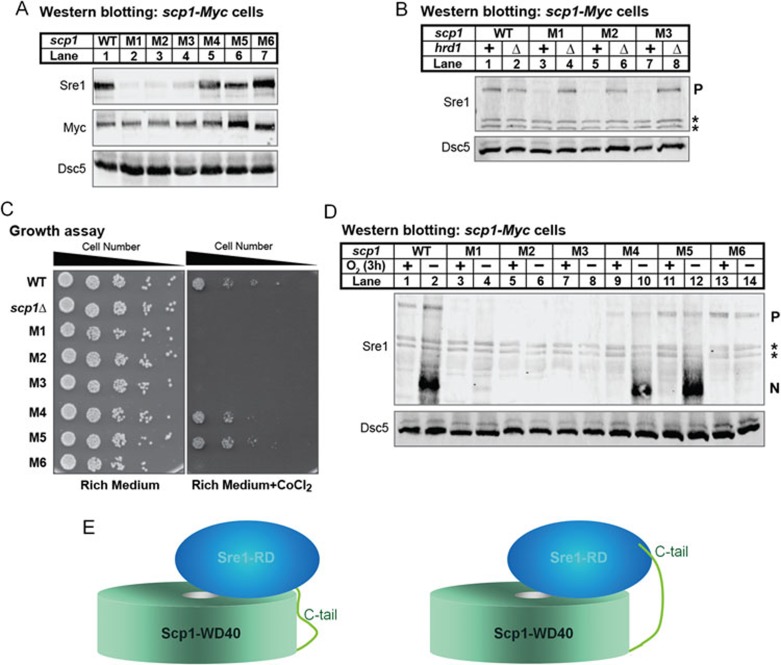Figure 5.
Functional analysis of Scp1 mutants in vivo. (A) Western blot of membrane fractions from WT and the indicated scp1 mutant S. pombe strains probed with anti-Sre1 serum, anti-Myc IgG or anti-Dsc5 serum. (B) Western blot of whole-cell lysates from WT and the indicated scp1 mutant S. pombe strains in the presence or absence of hrd1+ probed with anti-Sre1 serum or anti-Dsc5 serum. P denotes Sre1 precursor form. Asterisks indicate cross-reacting protein. (C) WT and mutant yeast (5 000, 1 000, 200, 40, and 8 cells) were grown on rich medium (3 days) or rich medium containing cobalt chloride (1.6 mM; 6 days). (D) Western blot of whole-cell lysates from WT and the indicated scp1 mutant S. pombe strains grown in the presence or absence of oxygen for 3 h probed with anti-Sre1 serum or anti-Dsc5 serum. P and N denote Sre1 precursor and nuclear forms, respectively. Asterisks indicate cross-reacting proteins. (E) Two potential models for Sre1-Scp1 complex formation.

